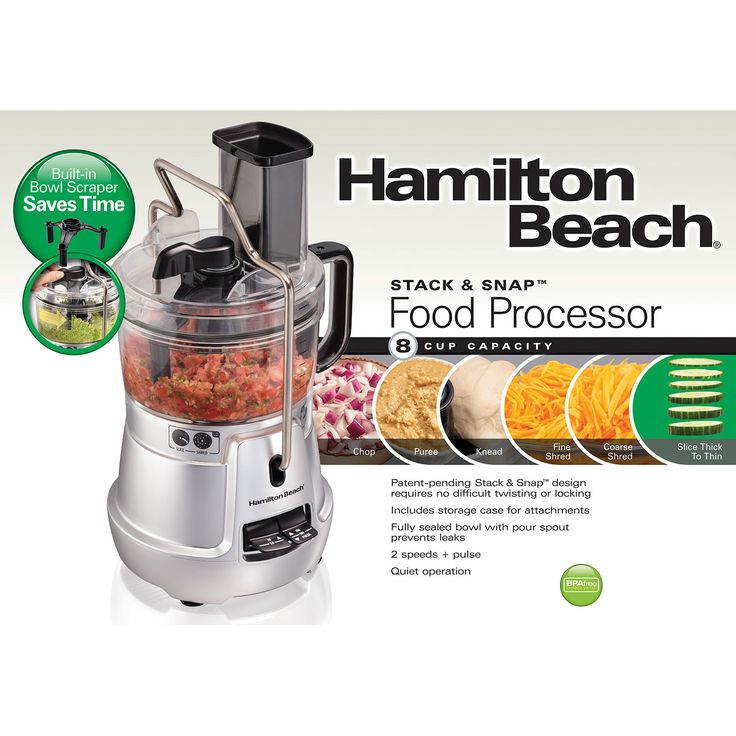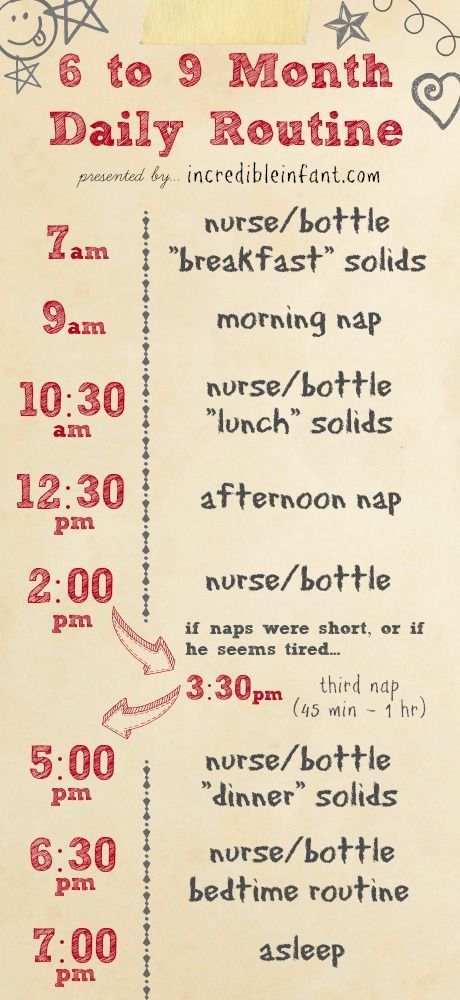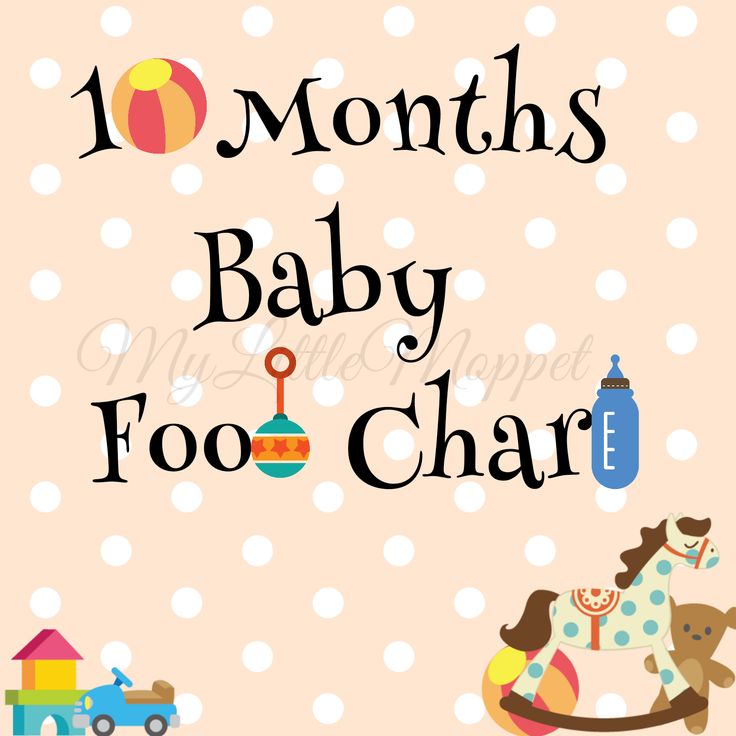Baby food chewer
Ultimate Guide to Baby Feeders: Mesh and Silicone
You may have seen baby feeders, whether mesh or silicone, and wondered what they are for. They are a great tool for feeding babies and toddlers—and are especially awesome for teething relief. There are many on the market though, so today I’m sharing the best of the best.
Baby Feeder
A baby feeder is made up of an easy-hold handle and a little pouch with lots of holes. The idea is that the holes allow some of the flavor and texture of the food to come out, without the concerns that may come with larger pieces of food.
This means you can worry less when it comes to choking risks.
One thing to keep in mind: They don’t allow babies to have the full texture experience of the food—since the texture is mostly the mesh of the feeder. That means you don’t want to use one of these for every meal (or even most meals).
Lots of exposures to lots of textures helps babies and toddlers gain confidence in handling all sorts of foods, which can make feeding kids a lot easier over the long run.
But an infant feeder can be a handy tool to have in the mix, especially if on the go, starting to transition to baby food, or trying out a new food that has you a little nervous.
And they are a great way to offer cold teething relief to soothe baby’s gums.
Baby Fruit Feeder
Many people like to use baby feeders to offer fruit, either fresh or frozen, since the product is a safe way for baby to suck on and explore the flavor of a wide range of fruit.
TIP: Another name for this is Baby Fruit Pacifier.
Best Baby Food Feeders
Below are my top picks for infant feeders chosen for ease of use, durability, and ease of care (as in washing!). There are different materials listed, as well as specific information on each product.
Best Mesh Feeder
Munchkin Baby Feeder, sold in a set of two. (Or choose the ones that come with travel caps.)
This baby feeder has a streamlined, simple design of a mesh bag for the food and a ring for baby to hold onto. Small, digestible pieces of food come through so baby is getting some nourishment (and comfort if using for teething) without the risk of choking. It’s about $7 for two of them.
Small, digestible pieces of food come through so baby is getting some nourishment (and comfort if using for teething) without the risk of choking. It’s about $7 for two of them.
Best Silicone Feeder
Boon Silicone Feeder
This baby feeder, which is priced at under $6, is made from durable silicone and can be used with fresh or frozen foods. The interior stem forces food toward the tiny holes in the feeder and the small handle is sized just right for baby’s little hands.
Kidsme Baby FeederBaby Feeder Pacifier Combo
Kidsme Food Feeder
This popular Kidsme feeder has a replaceable silicone pouch that comes in two sizes, so you can adjust and replace as your child grows. It has a unique handle style that some babies may prefer and can be used as a pacifier too. It’s usually priced around $15 and is recommended for ages 4-24 months.
What baby foods should I put into a baby feeder?
Here are some fruits that are good to serve in a baby feeder:
- Raspberries, fresh or frozen
- Strawberries, fresh or frozen
- Blackberries, fresh or frozen
- Cantaloupe
- Honeydew
- Banana
- Mango, fresh or frozen
- Roasted sweet potato
- Roasted butternut squash
- Ripe fresh pear
- Fresh cucumber, skin removed
- Watermelon
- Cooked red meat such as steak
- Frozen grapes (These are NOT safe served to a child this age in any other way as they are a choking risk.
 They are fine served inside the feeder, though.)
They are fine served inside the feeder, though.)
TIP: You can use frozen fruit or ripe fresh fruit that’s soft and easy to gum. Avoid any fruits or veggies that are very hard as baby may be frustrated by that texture.
Frequently Asked Questions
What age can baby use a mesh feeder?
Babies can use an infant feeder soon after starting solids around 6 months, or when they can easily hold it and bring it to their mouth.
How do I use a baby feeder to help with teething?
If you fill the feeder, whether mesh or silicone, with frozen fruit, you can soothe teething in infants who are eating solids or in toddlers. It’s cold and yummy, yet requires no real work for the child to suck on, so it’s comforting.
Are all of these baby feeders BPA-free?
Yes, if you choose a mesh baby feeder or one made from silicone, they are BPA-free.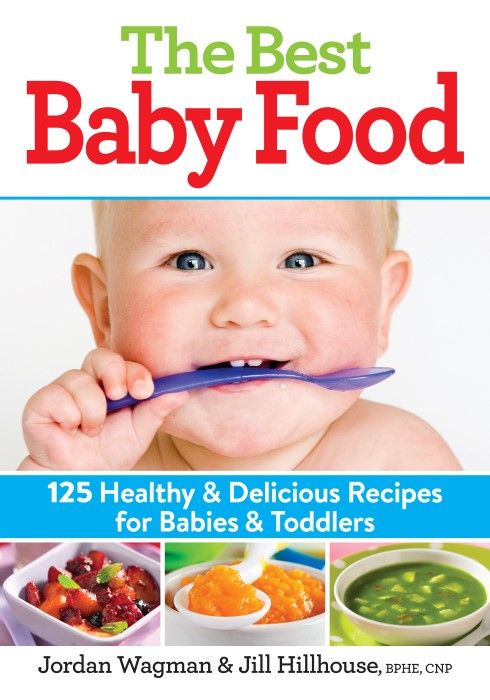
What’s the best way to clean a baby feeder?
Try using a bottle brush or just running water to clean out the mesh. It should be fairly easy to clean if you avoid letting it sit too long with food in it!
Are baby feeders good for babies?
The one downside could be that if you rely on them too much, the child learns the texture of the feeder, rather than of the food. This can make it harder for a child to learn to move actual food around in their mouths and harder for them to accept a range of textures in the future when you don’t want to be using the mesh feeder as much.
Because of that, I recommend using this product at limited times such as when on the go at a restaurant or to help sooth a teething infant, baby, or toddler.
This is not recommended as a way to feed your child at every meal.
If you are worried about choking, review this information on toddler choking and trust that if you serve foods that are easy to squish between your fingers, baby is sitting down at meals, and you are with them, they will learn to eat like so many other kids who have gone before them!
You May Also Like
- Best Baby Puffs
- Favorite Sippy Cups
- Best Snack Containers
- Best Lunch Boxes
- Favorite Suction Bowls
- Top High Chairs
I’d love to hear your thoughts on baby feeders in general or on these specific products, so please comment below to share!
This post was first published May 2019.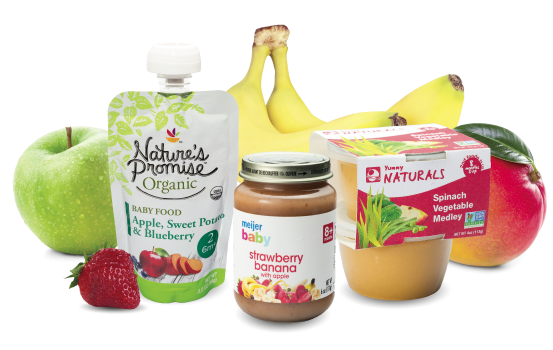
Baby Chewer - Etsy.de
Etsy is no longer supporting older versions of your web browser in order to ensure that user data remains secure. Please update to the latest version.
Take full advantage of our site features by enabling JavaScript.
Find something memorable, join a community doing good.
(1,000+ relevant results)
how to choose and what kind of baby food is better?
The ideal "baby food" for an infant is breast milk. However, not all mothers can breastfeed their baby, usually this is due to the health of the mother or child. It happens that the woman herself has a serious condition after childbirth and in the early postoperative period, reduced lactation or diseases in which breastfeeding is contraindicated. In such cases, the baby is given formula milk - this is the only alternative to mother's milk. Subsequently, at four to seven months, complementary foods should be introduced into the child's diet, regardless of whether he is breastfed or artificial. The mother is faced with the task of choosing the right baby food for complementary foods.
However, not all mothers can breastfeed their baby, usually this is due to the health of the mother or child. It happens that the woman herself has a serious condition after childbirth and in the early postoperative period, reduced lactation or diseases in which breastfeeding is contraindicated. In such cases, the baby is given formula milk - this is the only alternative to mother's milk. Subsequently, at four to seven months, complementary foods should be introduced into the child's diet, regardless of whether he is breastfed or artificial. The mother is faced with the task of choosing the right baby food for complementary foods.
In this article, we will talk about what foods for babies are and how to choose the best baby food.
Legislation under "baby food" means food products that meet the physiological needs of the body of a child under 14 years of age. And nutrition for young children is food intended for children from birth to three years[1]. It is necessary to make a diet taking into account the age of the baby and the characteristics of his physical condition.
The Union of Pediatricians of Russia created the National Program for feeding children in the first year of life and the National Program for optimizing the nutrition of children from one to three years old [2]. They describe recommendations regarding what formula to feed the baby from birth, how to introduce complementary foods and expand the baby's diet. These programs provide detailed information on what nutrients and nutrients should be included in the diet of children of different ages.
First you need to figure out what kind of baby food is [3]. Products for toddlers can be divided into two categories:
Infant formula. There are for children from birth to six months (formula 1 mixtures, or initial), from six months to a year (formula 2) and from a year (formula 3). The composition of such baby food is adapted, that is, as close as possible to the composition of breast milk.
- In the initial mixtures, the amount of protein is reduced to 1.
 2-1.5 g / 100 ml - in accordance with the composition of breast milk. They also changed the fat and mineral profile. The initial mixtures are enriched with such an essential amino acid as taurine, and micronutrients, probiotics, vitamins.
2-1.5 g / 100 ml - in accordance with the composition of breast milk. They also changed the fat and mineral profile. The initial mixtures are enriched with such an essential amino acid as taurine, and micronutrients, probiotics, vitamins. - After six months, the baby's need for protein increases, mother's milk changes its composition. And babies on artificial feeding begin to be fed with a more nutritious mixture of formula 2. Taurine is no longer always needed: the body of a baby aged from six months to a year is able to synthesize this amino acid itself. Meanwhile, the content of iron, calcium, zinc increases compared to the initial mixtures, because by this age the child's reserves of minerals received from the mother during pregnancy are depleted, and they need to be replenished.
- A child's diet changes after one year - he is already able to eat a variety of solid foods. However, it is advisable to continue to feed him with a mixture, though already formula 3. Pediatricians recommend it as a source of vitamins and minerals that the baby can easily absorb.
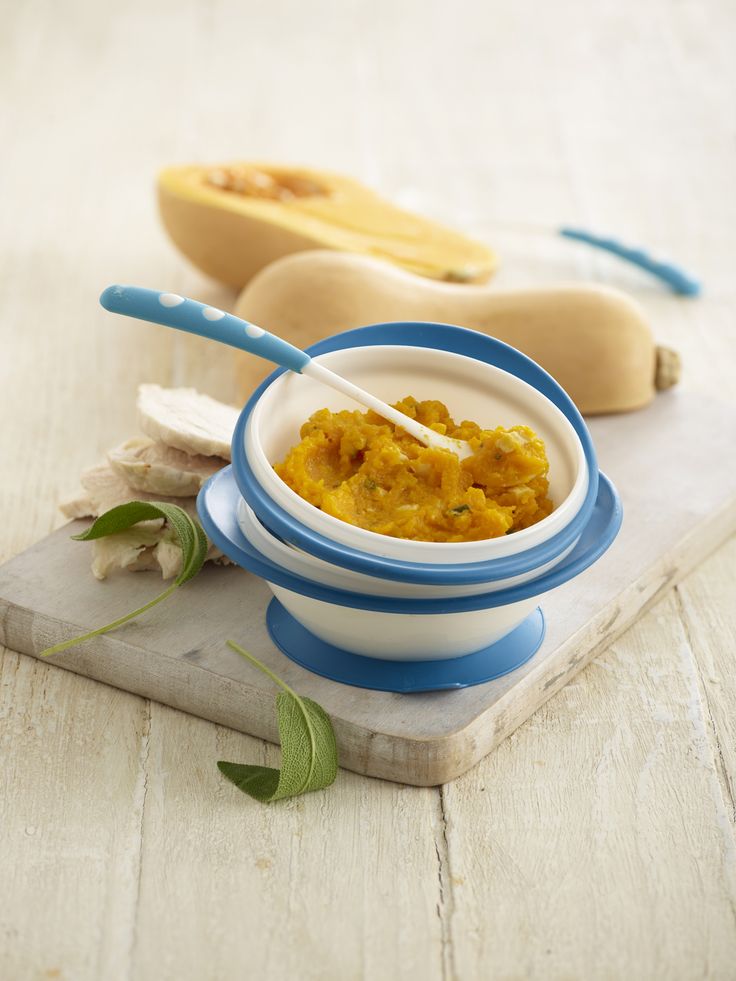
Complementary foods As we have already noted, it is introduced when the baby is four to seven months old. This interval is called the "critical window" and is considered optimal for the initiation of complementary foods for several reasons:
- The baby needs a wider range of minerals, vitamins and other nutrients. In addition, his baby's digestive system is already ready to accept more solid and complex foods than mother's milk or infant formula.
- At this age, the child develops an interest in food, and it is necessary to offer him the right foods to develop his taste.
- During this period, the risk of developing a food allergy to a new product is lower.
- Timely introduction of complementary foods prevents the risk of micronutrient deficiencies and iron deficiency anemia.
Usually the first food is vegetable puree or monocomponent gluten-free cereals, dairy or dairy-free. Over time, cereals containing gluten, supplements from fruits and berries, and also consisting of several cereals are added. A six-month-old child can already be given several types of vegetables and cereals. Also, at about six months, they begin to give meat puree, then fruit, and from eight months - fish. A child from seven months is allowed the yolk.
A six-month-old child can already be given several types of vegetables and cereals. Also, at about six months, they begin to give meat puree, then fruit, and from eight months - fish. A child from seven months is allowed the yolk.
From the age of 12 months, complementary foods already make up the majority of your baby's diet. At this age, it is especially important to diversify the child's diet: he can be given soups with small pieces of vegetables, meat, fish and cereals.
Information
During the first feeding, the baby's eating habits are laid, and it depends on the parents how correct they will be. Often, mothers introduce fruit juices into complementary foods too early. And because babies have an innate preference for sweet tastes, they can become naughty and stop eating the unsweetened foods they need, especially vegetables. Unhealthy taste habits are formed, which can later provoke obesity.
Domestic doctors are concerned about such irrational nutrition of young children - due to the wrong approach to nutrition, many babies experience a deficiency of vitamins and an excess of fast carbohydrates.
How to choose baby foods
Finding the right foods for your baby is not an easy task. Store shelves are bursting with boxes, jars and bottles, and manufacturers write on every second package that the baby will be healthy, strong and cheerful after feeding. Of course, the baby will receive the necessary substances, no matter what product his parents choose, because all the production of baby food is strictly controlled by the state. By the way, Russia has some of the most stringent requirements for the quality of baby food in the world.
However, products for children differ in their properties. It is necessary to select food so that by the end of the first year of life the baby has actively developed chewing skills and an interest in independence, and the diet of complementary foods is reasonably varied.
For children from one to three years of age, the diet should be even more varied. It is important that the child receives daily something new from the main food groups: dairy, vegetables and fruits, meat and fish, cereals, butter and vegetable oil. Of course, the baby's diet should be expanded taking into account his state of health.
Of course, the baby's diet should be expanded taking into account his state of health.
When organizing the nutrition of a child from the moment of introduction of complementary foods and up to three years, a mother needs not only to know what can be fed, but also to consider what foods should not be included in the diet. Among the prohibited products for children under three years of age:
- any mushrooms, vegetables and fruits in a marinade;
- pickles, preserves in tomato sauce;
- commercial juice concentrates, carbonated drinks, coffee and strong tea;
- various condiments - mustard, ketchup, hot sauces, horseradish, pepper, vinegar, mayonnaise;
- products containing flavors, industrial colors, including chewing gum;
- margarine and refractory fats - lamb, pork;
- chocolates, sweets and other sweets.
To choose the right baby food, you need to know exactly what you should pay attention to and what you don't need to worry about.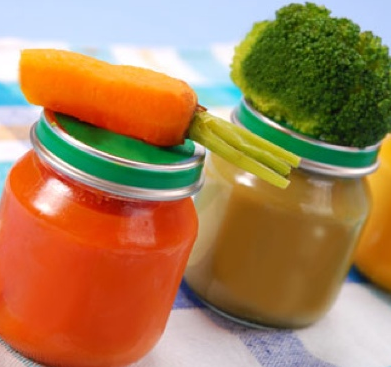
When choosing mixtures, it is important to check:
- Absence of palm oil. Formula manufacturers may use palm oil (more specifically palm extract) because, like breast milk, it is rich in palmitic acid. However, in human milk, palmitic acid is in the beta position, while in palm oil it is in the alpha position. Such alpha-palmitic acid can interfere with the absorption of calcium and fats and is generally less well absorbed by the child's body. This can negatively affect the work of the intestines, lead to constipation, regurgitation. Milk fat is better suited for baby food as a source of palmitic acid[4][5].
- Protein ratio. Breast milk protein is primarily whey proteins and casein. A child needs both types of protein, while proteins are easily digested, which cannot be said about casein. If baby food contains a lot of casein, it stays longer in the digestive tract, which can cause problems with the baby's stool.

- The presence of additional functional elements in the composition - lutein, nucleotides, pre- and probiotics. The task of lutein is to protect vision from ultraviolet rays. Nucleotides are low molecular weight compounds that promote the growth of beneficial bifidobacteria in the intestines. And pre- and probiotics in the composition of infant formulas help to establish comfortable digestion.
When choosing complementary foods, pay attention to:
- Age appropriate. It is important that in the diet of a child under three years of age who receives complementary foods, special children's products predominate - in their composition the components are selected taking into account the age-related needs of the baby's body. It is impossible at an early age to transfer children to "adult" foods like pickles, smoked foods, fast food, and so on.
- Fortified products. It is important that the composition contains vitamins and minerals.
 The National Child Nutrition Optimization Program recommends choosing complementary foods that contain elements designed to prevent anemia, rickets, and vitamin deficiencies.
The National Child Nutrition Optimization Program recommends choosing complementary foods that contain elements designed to prevent anemia, rickets, and vitamin deficiencies. - For a varied diet. The menu for a baby up to six months is quite monotonous. But as they grow older, the baby needs more various nutrients - proteins, carbohydrates, fats, vitamins, minerals.
- For the individual reaction of the baby. If the child is already receiving complementary foods, then it is worth introducing a new product only after the previous one has been fully introduced. If the baby is allergic to the product, then it should be administered carefully, carefully checking the reaction of the body.
Ingredient safety testing is optional. Of course, the content of any "chemistry" in the product for feeding a child, whether it be a mixture or complementary foods, is unacceptable. There is no need to worry about this: baby food is carefully checked. If it is registered on the territory of the Customs Union and hit the shelves, then it complies with SanPiN 2. 3.2.1940-05 and there will be no "prohibited" components in its composition. Also, contrary to popular misconception, in Russia it is forbidden to use GMOs in children's products.
3.2.1940-05 and there will be no "prohibited" components in its composition. Also, contrary to popular misconception, in Russia it is forbidden to use GMOs in children's products.
Note
Baby food in jars (usually mashed potatoes) has a short shelf life after opening because it does not contain preservatives. However, before the jar is opened, the products can stand for quite a long time on the shelves of stores or in the refrigerator at home. This is possible thanks to a special production technology, sterilization and vacuum packaging. If a soft pop is heard when opening the jar, this is a good sign: the puree is not spoiled. But products in jars with swollen lids or a protruding bottom should not be used: microorganisms already multiply in such food, it is not suitable for food.
Features of the choice of dairy products
It is necessary to choose dairy products for babies, following the doctor's recommendations. The specialist will take into account the health of the baby, especially if he is allergic to cow protein. In Russia, such an allergy occurs in 30–40% of children [6]. Such a reaction may occur due to hereditary predisposition and immaturity of the body. But most often, allergies go away when the child grows up.
The specialist will take into account the health of the baby, especially if he is allergic to cow protein. In Russia, such an allergy occurs in 30–40% of children [6]. Such a reaction may occur due to hereditary predisposition and immaturity of the body. But most often, allergies go away when the child grows up.
Goat milk baby food may be a suitable option for young children with a predisposition to allergies. Its protein is perceived by the body better than cow's: alpha-s1-casein, contained in large quantities in cow's milk, makes a product based on it difficult to digest - food stagnates in the baby's gastrointestinal tract, motor skills are disturbed, as a result, allergies often occur. In goat milk, as in breast milk, there is practically no alpha-s1-casein [7]. Therefore, goat's milk, and hence the mixture based on it, are better absorbed.
Of course, with the introduction of complementary foods, other dairy products will appear in the baby's diet. Unadapted fermented milk drinks, such as kefir, yogurt, biolact, can be introduced into the diet from eight months and in an amount not exceeding 200 ml. Also during this period, it is recommended to give cottage cheese - no more than 50 g per day, but according to indications, it can also be prescribed from the age of six months. Whole milk cannot be used as the main food, and it is advised to introduce it into the diet of babies no earlier than a year (in the amount of 100-150 ml per day) [8]. As mentioned above, it must be adapted infant milk or formula 3 formula.
Also during this period, it is recommended to give cottage cheese - no more than 50 g per day, but according to indications, it can also be prescribed from the age of six months. Whole milk cannot be used as the main food, and it is advised to introduce it into the diet of babies no earlier than a year (in the amount of 100-150 ml per day) [8]. As mentioned above, it must be adapted infant milk or formula 3 formula.
To choose the best baby food, it is necessary to take into account the health of the baby, his tastes, as well as individual reactions of the body. Therefore, before going to the store, you should consult a doctor. The specialist will not only tell you which baby food to choose, but also give recommendations on how to make the child's diet balanced and healthy.
More than just a blender and steamer. Top 10 products for preparing baby food
With the advent of children, you have to look at life differently: habits and even diet change. Now you can’t order delivery with breakfast from “Appetizing, but the sides will get bigger, period”: you need to cook something for the child and watch how he eats. Especially for young parents, we have compiled a list of products with which you can cook something useful for the younger generation and yourself.
Now you can’t order delivery with breakfast from “Appetizing, but the sides will get bigger, period”: you need to cook something for the child and watch how he eats. Especially for young parents, we have compiled a list of products with which you can cook something useful for the younger generation and yourself.
Contents
What should be the right baby food
Top 10 devices for preparing children's meals
food. Mandatory products are animal or poultry meat, dairy and sour-milk products, vegetables, fruits, bread, cereals, vegetable and butter, fish and eggs.
- Meat dishes: 2-3 times a day
- Fish dishes: 2-3 servings per week
- Eggs: 2-3 per week
- Edible fats: 3-4 teaspoons of butter and/or vegetable oil per day
- Cereal products: bread - 2-3 servings per day, cereals and side dishes - 1 time per day
- Fruits and/or vegetables: at least 5 times a day
- Dairy products: at least 3 servings per day (including breast milk, yogurt, cottage cheese, infant formula or cereal ingredients)
Such nutrition will provide the child with all the necessary vitamins, help him grow and develop, strengthen his brain and nervous system, which is especially important in the troubled XXI century.
As for prohibitions, do not give your children, even if they ask you hard, foods such as:
- Mushrooms, canned snacks, pickled vegetables and fruits
- Canned homemade products
- Dry concentrates for side dishes
- Spicy sauces, mustard, horseradish, pepper, vinegar, mayonnaise
- Natural coffee
- Juices and beverages in the form of dry concentrates, carbonated soft drinks
- Products containing food additives (flavorings, dyes of artificial origin, including chewing gum), popcorn
- Compound fats, cakes and pastries
Multicooker Moulinex Fuzzy Logic MK707832
Price: 6 499 rubles*
View item
You can cook almost all dishes in the multicooker: soup, side dish, porridge, vegetables, meat, casserole, yogurt or baby food. This model has a large bowl (5 liters), maintains the temperature to feed the child whenever he wants, as well as nine programs, most of which are listed above.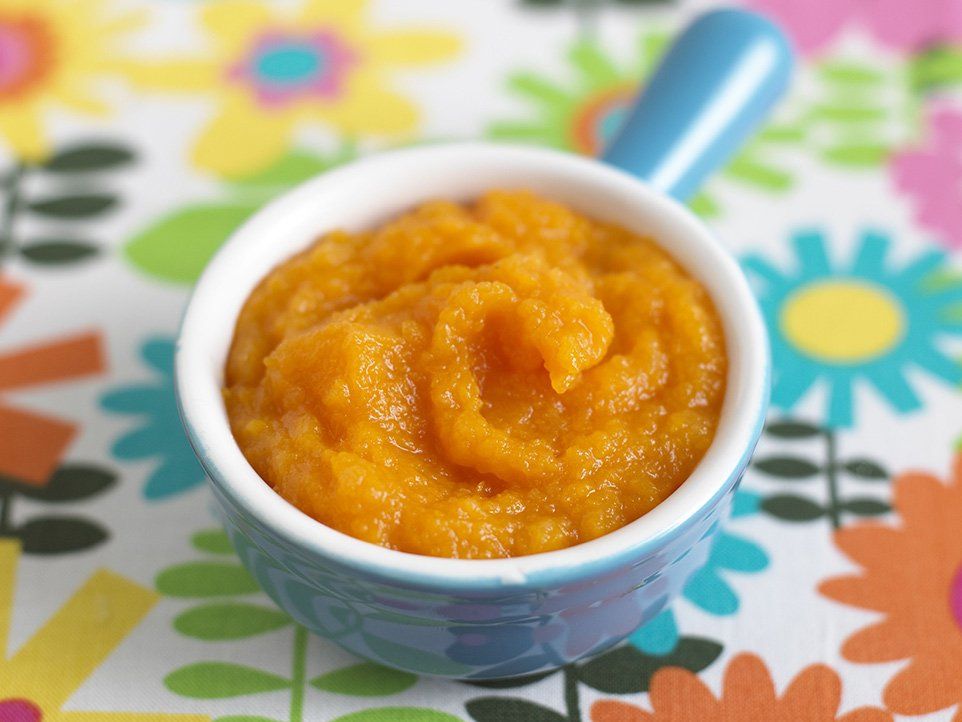 And any dishes can be steamed.
And any dishes can be steamed.
Multicooker porridge recipe:
- Millet - 1 cup
- Water - 2 glasses
- Butter - 2 tbsp. l.
- Salt - to taste
Rinse 1 glass of millet, pour over with boiling water (to remove bitterness), put in a multicooker bowl.
Add 1 tbsp oil, add 2 multi-glasses of water and turn on the Cereals mode for 35 minutes.
After the signal for the end of the program, add the remaining oil to the porridge and mix.
Moulinex Quickchef Immersion Blender DD656832
Price: 4 999 р.*
View product
How to make raspberry-banana puree / chickpeas and vegetables puree without an immersion blender? Especially without one like the Moulinex Quickchef with its 20 speeds, turbo mode, convenient 800 ml measuring cup and 500 ml chopper. You can whip food with the help of a special whisk, while you don’t have to worry about splashes: a special shape will protect you and the kitchen from lumps flying in different directions.
Raspberry banana puree recipe:
- Raspberry - 150 g
- Milk - 100 g
- Banana — 1 pc.
Puree fresh or defrosted raspberries, peeled banana and milk in a blender.
Sprinkle ground cinnamon to taste. Pour the raspberry-banana smoothie into glasses, sprinkle with cinnamon and garnish with whole raspberries.
Mixer Moulinex Silence HM653910
Price: 8 499 r.*
View product
Mixer, with which you can cook pancakes, as well as other tasty and healthy dishes for children. Has six speeds.
Mixer Pancake Recipe:
- Premium Flour - 1.5 cups
- Milk - 500 ml
- Granulated sugar - 1 tbsp. l.
- Chicken eggs — 2 pcs.
- Refined vegetable oil - 2 tbsp. l.
- Salt - 0.5 tsp.
Break the eggs into a bowl, stir with a spoon or whisk.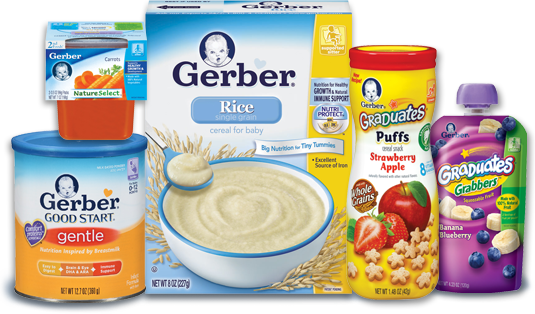
Then add salt, granulated sugar, knead the dough again.
Pour warm milk, lower the mixer into the resulting mixture, beat at low speed until smooth.
Next add the flour. To make the pancakes thin, we introduce the previously sifted flour in small portions. Stir the dough after each addition of flour.
Then add the oil and make the final beating with a blender until a homogeneous structure, breaking up all the lumps.
All that's left is to bake pancakes.
Solis Egg Boiler & More (827 97787)
Price: 4 890 rubles*
View product
As we have already found out, eggs must be in the child's diet. To be able to cook them with maximum convenience, you need an egg cooker. For example, Solis Egg Boiler & More with a compartment for seven eggs and several cooking modes (hard-boiled, in a bag, soft-boiled).
Recipe for baby salad with egg, peas and cucumber:
- Cucumbers - 2 pcs.

- Boiled eggs — 3 pcs.
- Canned green peas — 100 g
- Dill - 1 bunch
- Sour cream 10% - 50 ml
- Salt - 1 pinch
Boil the eggs in an egg cooker, then chop all the ingredients, mix, salt and season with sour cream.
Steamer Tefal Convenient Series VC145130
Price: $79*
View product
Steam cooking preserves healthy vitamins in the ingredients of the dish. With the help of Tefal Convenient Series, you can cook not only for children, but also for the whole family: the steamer has two tiers, and the total volume of the bowl is 6 liters. The water tank is 1.5 liters, while the liquid can be added directly during the cooking process using a special compartment.
Steamer Broccoli Chicken Recipe
- Chicken Fillet - 200g
- Fresh potatoes - 3-4 pcs.
- Cauliflower and broccoli to taste
- Salt - pinch
Chicken fillet and potatoes cut into small pieces.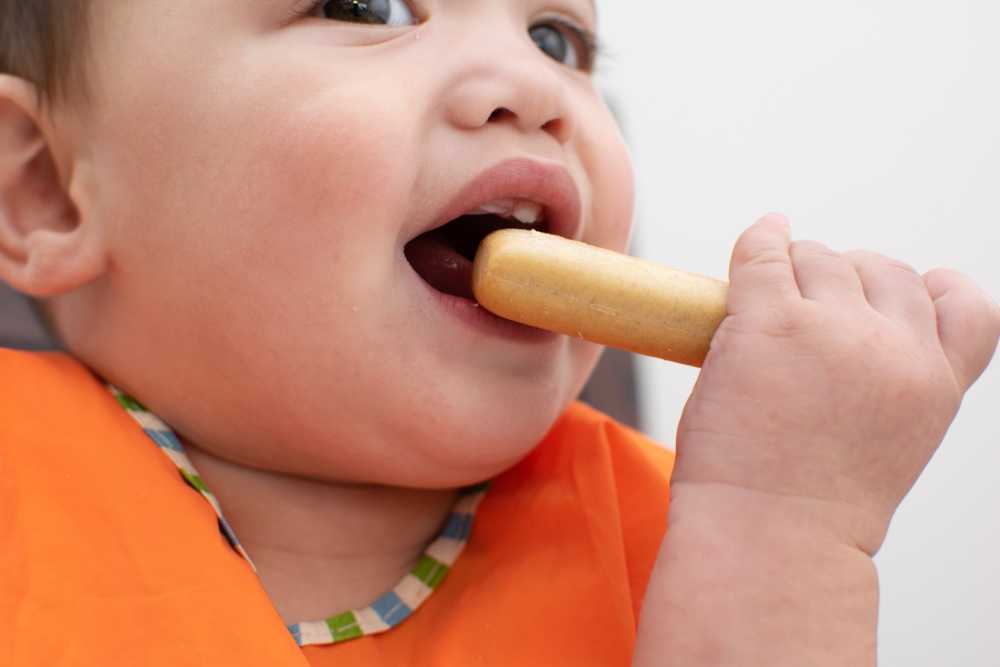
Put the potatoes and chicken on the first layer of the steamer, as they will need more steam to cook.
On the second tier - cauliflower and broccoli.
Cooking time - 30 minutes.
Mini-oven Artel AMD 3216 E
Price: 4 499 r.*
View product
Cooking much-needed meat, fish and vegetable dishes for children is much easier with the help of a mini-oven. The Artel AMD 3216 E model with a volume of 32 liters can operate in several modes. Management is very simple and convenient - mechanical. The kit comes with a baking sheet. A special feature is the high power of 2000 W, thanks to which dishes will be cooked quickly. For example, a casserole takes 25 minutes to cook.
Mini oven casserole recipe
- Cottage cheese - 400 g
- Natural fruit yoghurt - 250 g
- Egg — 1 pc.
- Semolina - 2 tbsp. l.
- Sugar
Combine semolina with yogurt and let it swell for 15–20 minutes.
Drive 2 eggs into the mixture, mix.
Add sugar, continue mixing thoroughly.
Combine with cottage cheese and mix thoroughly again.
Line the paper in a fireproof baking bowl. We put the mass in a mini-oven, set the temperature to 200 degrees.
Bread machine Redmond RBM-M1921
Price: 9 999 r.*
View product
The bread machine cooks delicious and healthy bread, muffins, biscuits, jams and even soups with cereals. This model has 25 programs - even for making yogurt. Bread can be Borodino, rye, French, whole grain and even gluten-free.
Carrot cake in bread machine
- Wheat flour - 1 cup
- Sugar - 130 g
- Margarine - 100 g
- Chicken egg — 3 pcs.
- Grated carrots - 1 cup
- Baking Powder - 2 tsp
Beat eggs with sugar, add well-softened margarine and mix thoroughly.
Add finely grated carrots. Sift flour, mix with baking powder, add to the mixture. Mix well.
Cover the bucket with parchment paper and spread the dough. Bake in the “Baking Only” mode for 1 hour and 20 minutes. 15 minutes before the end of baking, check the cake with a dry wooden stick.
After baking, leave the cake in the bread machine for another 10 minutes and take it out.
Yoghurt maker Tefal La Yaourtiere YG500132
Price: 7 399 rubles*
View product
Yoghurts will help satisfy the child's need for fermented milk products. At the same time, working with the device is very simple: you just need to fill the containers with ingredients, and then the yogurt maker will do everything by itself. Tefal La Yaourtiere holds 8 jars, has a display to show all important information, and automatically turns off by a timer. Also included is a container for cottage cheese.
Yogurt recipe in yoghurt maker
- Milk - 1 l
- Natural yoghurt or dry sourdough starter
Put 2 tablespoons of yogurt or diluted dry starter into a container.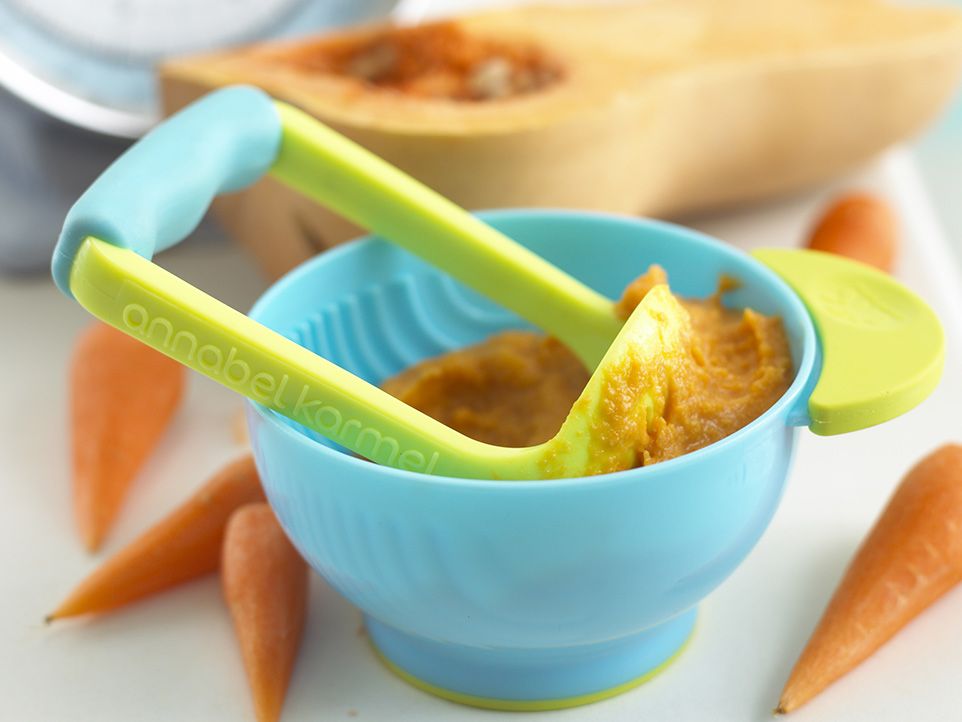
Add 100 ml milk and stir.
Add milk and mix again.
Pour contents into jars.
We put it in the yogurt maker, turn it on and wait 9 hours.
Juicer Redmond RJ-980S
Price: 7 499 r.*
View product
The best juice is not in an aluminum can, but from apples and carrots that grows in the garden of your own dacha. In this case, you should not worry about any concentrates that can be added at harmful imperialist factories. The model has a 0.6 liter juice tank, one speed and a reverse function to get any trash that has not passed through the auger.
Juice recipe apple - carrot in juicer
- Apples - 5 kg
- Carrot — 1500 g
- Sugar - 300 g
We wash apples and carrots.
Peel the carrots.
Squeeze juice from apples, pour into another container, wait for the foam to thicken.
Extracting juice from carrots.
Remove the foam from the apple juice, strain it through a sieve with a cloth.
Mix apple and carrot juice, add sugar (you can also without sugar).
We heat the juice to 90 degrees, but do not boil it.
Turn off, let cool. Juice is ready.
What should I do if my baby refuses to breastfeed? Use a breast pump. There are manual and automatic.
Balio Rh308 breast pump
Price: 990 RUB*
View product
Inexpensive manual breast pump with a silicone pad-masseur that provides gentle breast stimulation. Included is a 150 ml bottle.
Electric breast pump Maman LS-AE1
Price: 3 690 rubles *
View item
A breast pump that I would like to recommend solely because of its name. Bad technique "Maman" will not be called. This is an electric model with a convenient arrangement of controls and two modes of operation. Bonuses: pumping intensity is adjustable, and a massager is built in.


